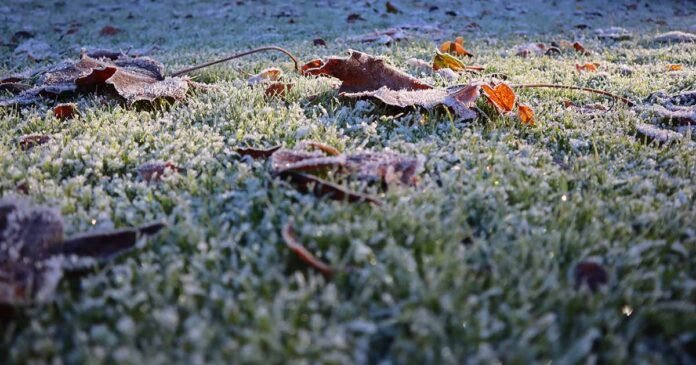The lawn may be the largest part of your garden landscape.
From seeding and mowing to weeding and raking autumn leaves, you do your best to keep it looking lush and lovely, and take pride in the accomplishment.
And once those leaves are cleared away, it’s goodbye to lawn chores until spring, right?
Wrong.
Even when turf is dormant during the coldest months of the year, it can benefit from a bit of care and attention.

We link to vendors to help you find relevant products. If you buy from one of our links, we may earn a commission.
Depending on where you live, your lawn may be comprised of warm season grass, like zoysia and Bermuda, or cool-season varieties, such as fescue, Kentucky blue, and perennial rye.
Warm season grass grows in spring and summer, and turns the color of straw in cold weather.
Cool season turf does most of its growing in spring and fall, and retains some or all of its green hue through the coldest months.
In this article, you will learn 11 ways to care for your lawn in winter to keep it healthy, and give you a jump-start on the next growing season.
Winter Lawn Care Essentials
1. Aerating
The soil underneath the grass has a tendency to become very compacted, from heavy foot traffic or the weight of machinery, such as that used in home building and landscaping.
This can cause the soil to dry out, and lead to poor nutrient uptake by grass roots, as well as drainage problems in the landscape.


In addition, the layer of living material and debris between the soil and the visible grass is called “thatch.”
A thickness of up to one inch of thatch is characteristic of a healthy lawn. More than that may block air and water penetration, reducing nutrient uptake and contributing to drainage issues.
The solution to both soil compaction and excess thatch is aeration.
This is a process of making holes down through the turf and into the soil below, to introduce air and allow water to penetrate.
It can be done with a manual or power aerating tool, which may be of either the plug or spike type.
A power plug aerator churns up pellets of earth, slicing through thatch and compacted earth, bringing up nutrients from the soil below and depositing them onto the surface, where the next rain or snow washes them back down to nourish the grass.
The spike type pokes holes into the ground, effectively breaking up the thatch, introducing air, and improving drainage.
It’s not quite as effective because it doesn’t bring up plugs of nutrient-rich earth to the surface to feed the turf.


For my small patch of lawn, I use a pitch fork, stepping on it as I go along, to poke holes down through the grass and into the soil.
The spikes cut through the thatch, increase airflow, and improve drainage.
The improved drainage achieved through aeration helps to prevent a condition called “crown hydration,” in which grass takes up water on a warmer day, only to have it freeze inside its cells and rupture them, due to poor drainage.
Breaking through thatch to promote drainage also inhibits the development of “snow molds” during snow melting.
These fungal infections stain the grass pink (Fusarium patch) or gray (Typhula blight), as they kill the blades, crowns, and roots, weakening or killing grass plants.


